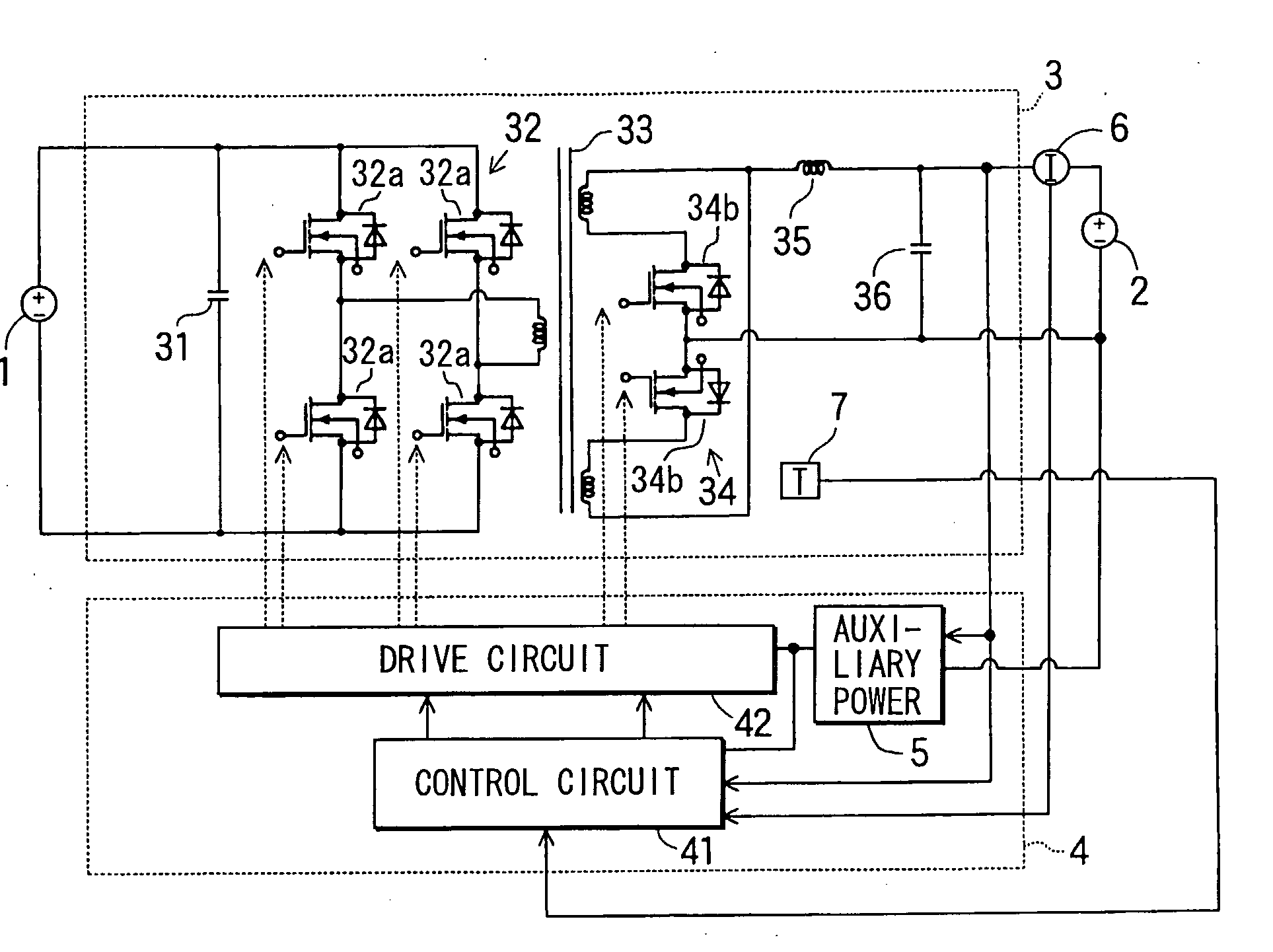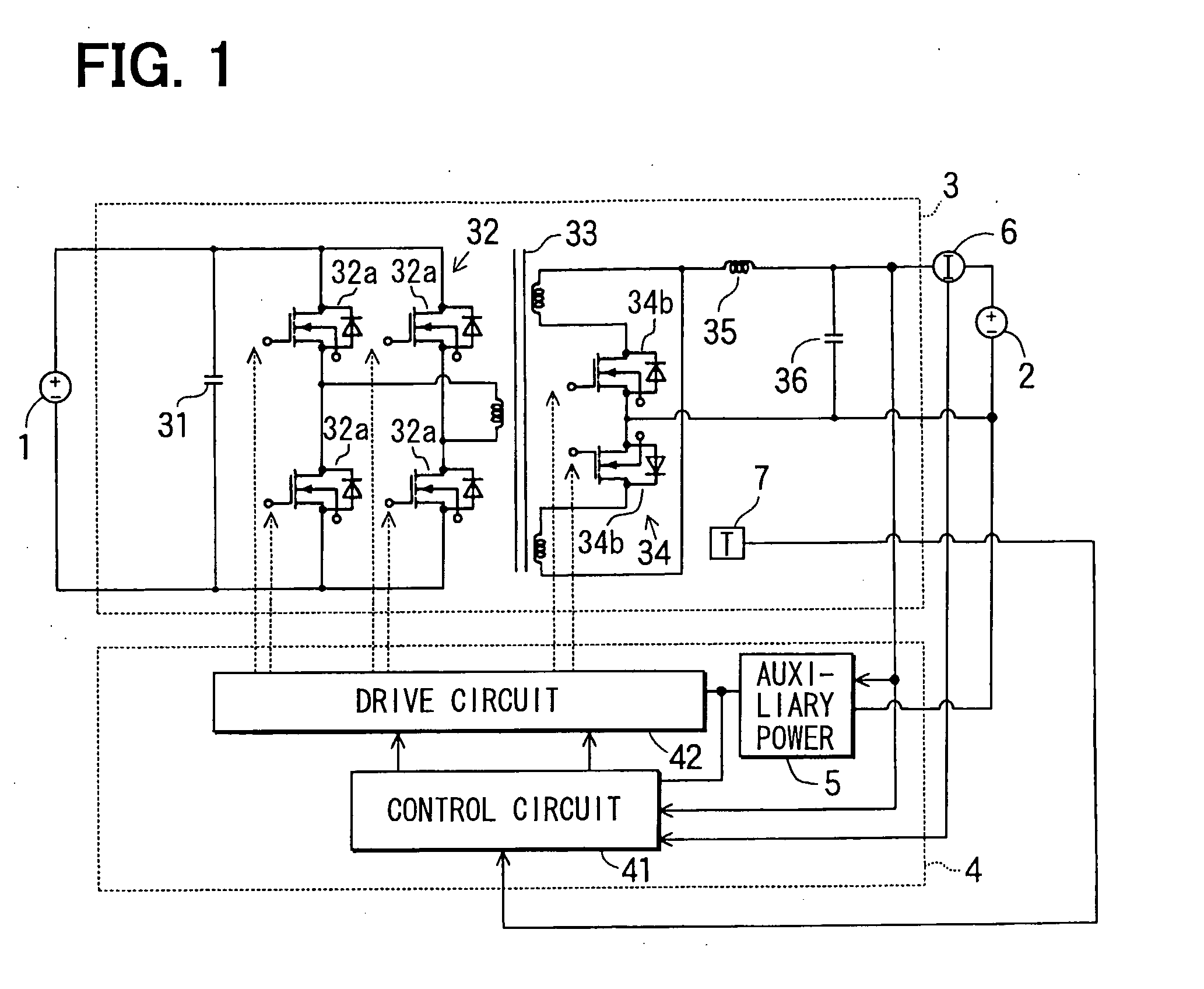Dc-dc converter system
a converter system and converter technology, applied in the direction of home appliance efficiency improvement, emergency protective circuit arrangement, sustainable buildings, etc., can solve the problems of limiting the output voltage of the dc-dc converter system, and achieve the effect of reducing noise, switching noise, and increasing the heating of the power switching devi
- Summary
- Abstract
- Description
- Claims
- Application Information
AI Technical Summary
Benefits of technology
Problems solved by technology
Method used
Image
Examples
Embodiment Construction
[0026]A DC-DC converter system is applied to a dual-battery type vehicular power supply system in a preferred embodiment as shown in FIG. 1.
[0027]This dual-battery type vehicular power supply system is connected to a main battery 1 and an auxiliary battery 2, and has a battery charging DC-DC converter 3, a DC-DC converter control circuit unit 4 for controlling a switching operation of this battery charging DC-DC converter 3. This power supply system is constructed to supply electric power to an electronic controller (not shown) from the main battery 1 for charging traction energy of a hybrid vehicle after transforming its voltage and to supply electric power to auxiliary or accessory devices and the auxiliary battery 2 for an auxiliary purpose. The power supply system is also connected to a current sensor 6 and a temperature sensor 7.
[0028]The DC-DC converter 3 for battery charging adopts a well-known circuit configuration comprised of an input smoothing capacitor 31, an inverter ci...
PUM
 Login to View More
Login to View More Abstract
Description
Claims
Application Information
 Login to View More
Login to View More - R&D
- Intellectual Property
- Life Sciences
- Materials
- Tech Scout
- Unparalleled Data Quality
- Higher Quality Content
- 60% Fewer Hallucinations
Browse by: Latest US Patents, China's latest patents, Technical Efficacy Thesaurus, Application Domain, Technology Topic, Popular Technical Reports.
© 2025 PatSnap. All rights reserved.Legal|Privacy policy|Modern Slavery Act Transparency Statement|Sitemap|About US| Contact US: help@patsnap.com



